
views
Preparing the Area for Treatment
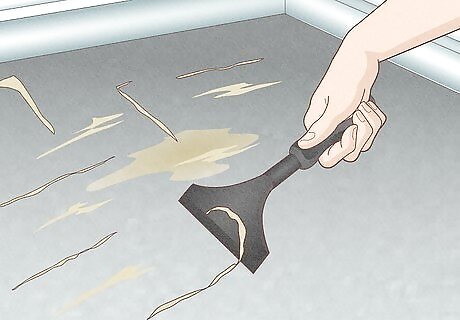
Clean the area of any dirt or debris. If there is residue stuck to the floor, such as old carpet adhesive, remove it with a scraper. Starting off with a clean floor means you won't create a muddy mess when you start adding the cleaning chemicals, nor will you drive any of the grime down into the porous surface of the concrete. Remove any furniture that might get in the way or could be harmed by the harsh chemicals you will be using and tape off any baseboard trim.

Select an enzymatic cleaning solution. Urine contains uric acid crystals, which are insoluble and bond tightly with the surface--in this case, the hard, porous concrete. Regular cleaning agents like soap and water won't bind to the uric acid, so no matter how many times you clean the area, those crystals stay put. An enzymatic cleaner will break down the uric acid and finally release it from the concrete. Even if you think the smell is gone after using conventional cleaning products, it will only take a little bit of moisture (even just a humid day) to revive the smell of urine. The presence of water causes the uric acid to release a gas, which creates a strong, foul odor. Look for enzymatic cleaners made especially for the removal of pet urine (you can even get one specifically for dogs or cats).

Use your nose or a UV flashlight to find the urine. A UV or blacklight can sometimes reveal the site of an old stain, which can be helpful if you've already washed the floor several times and there's no visual sign of the urine. Turn off the lights in the room and hold the UV light one to three feet from the floor. The stain may show up as a yellow, blue, or green mark. Use a piece of chalk to mark the spot if you only plan to spot-treat the floor. If the UV light doesn't work, you can also try smelling out the spot. Air the room out and then simply sniff the room until you've zeroed in on the area. Though you probably want to pay extra attention to these spots, possibly treating them more than once, it is recommended you treat the entire floor so you don't miss any spots that didn't show up under the UV light. Treating the entire floor will also keep your floor from appearing spotty--if the treatment causes the concrete to lighten and appear cleaner, it will look better if the entire floor is a clean and uniform shade.
Pre-Treating the Concrete
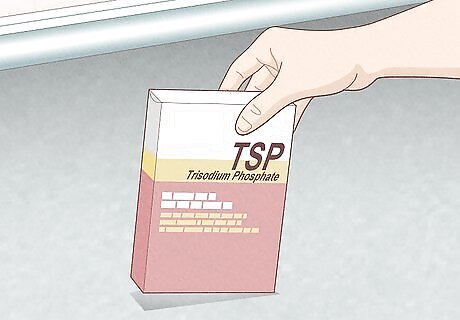
Purchase a heavy duty-cleaner like trisodium phosphate (TSP). A heavy-duty cleaner will ensure that all the all the other elements of the urine (like the bacteria) are completely removed and the enzymatic cleaner can work faster to dissolve the uric crystals. Make sure you wear protective goggles and rubber gloves, as TSP can damage your skin. Mix TSP in a bucket of very hot water at a ratio of 1/2 cup for every 1 gallon (3.8 L) of water. If you don't want to use a heavy-duty chemical like TSP, try cleaning with a water and vinegar mixture (2 parts vinegar to 1 part water) instead.

Pour the TSP mixture onto the floor and use a scrubbing brush to lightly scrub the area. Work in small increments (about 3x3 feet). It is important you do not allow the TSP to dry out too quickly. It should sit wet on the surface of the concrete for at least 5 minutes. If the mixture dries before 5 minutes have passed, add more TSP mixture or water to the area. The longer it remains wet, the deeper the mixture can penetrate the concrete. You will probably notice the urine smell grows very strong as you pre-treat the floor. This is a normal reaction of the uric acid crystals and the water.
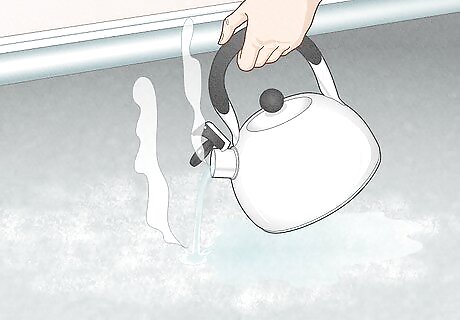
Pour hot water over the treated area and use a wet/dry vacuum or shop vac to vacuum up all the liquid. This will remove much of the spent TSP solution. Then rinse the floor with hot water twice more and allow the floor to dry naturally overnight. Don't use fans to speed the process along--your goal is still to saturate the concrete and loosen up as much of the urine residue as possible. If you find your vacuum smells like urine after sucking up the TSP mixture, spray the hose with the enzymatic cleaner (diluted to 1 part concentrate to 30 parts water) while the machine is running. Then turn the machine off and spray the inside of the dirty water tank. If you use a carpet cleaner, add water to the tank instead of pouring water on the ground and run it in a rinse/removal cycle.
Treating the Concrete

Prepare the enzymatic concentrate according to the instructions. Some cleaners must be mixed with a carpet cleaning solution, while others just require the addition of water. Follow all instructions carefully, and be sure you don't dilute the concentrate by adding too much water. Make sure the floor is entirely dry from the pre-cleaning the day before you begin applying the enzymatic cleaner.

Saturate the area with the enzymatic cleaner. You want to work in small sections of about 3x3 feet. Use enough of the solution that there is standing water on the area for at least 10 minutes. Add more solution if the area begins to dry out--again, it is essential the liquid permeate every layer and every pore of the cement so it can break down the uric crystals. For easier application, use a clean deck or household sprayer. Using a dirty sprayer will cause whatever residue (like mildew or dirt) to be sprayed into the absorbent concrete and may result in another bad smell. Be especially aggressive in areas where you noted the urine stain with the UV light. You may want to get a scrub brush and use that to really work the enzymatic cleaner into those areas. The most heavily marked areas may bubble. Take note of these areas, as you may need to treat them again if the smell persists. Repeat the process until you have treated the entire floor. Commit to a thorough cleanse. "As foster parents for rescue dogs, we were struggling with persistent urine odors from the concrete floor in our basement kennel area. After quick vacuum sessions and some spray cleaner, the smell would always return and often with a vengeance. This article gave us the knowledge that a deep cleanse is essential to neutralize uric acid crystals in pores. Though it will be laborious, we now feel equipped and committed to methodically wash, enzymatically break down residues, and seal the floor against future accidents. No more half-measures!" - Deb H. Employ an overnight powder soak. "With multiple elderly cats at home, concrete floors were the bane of my existence when it came to stubborn urine odors. I'd cleaned daily with various products to no avail. The tip to sprinkle on carpet powder, let it soak overnight, then rinse away was a game changer for releasing smells from cement pores. The powders are inexpensive, and this passive method gave my aching back a break! No more endless scrubbing for me." - Rob W. Gain insight into the cause. "I was baffled why my cat's urine stains kept resurfacing with a vengeance, especially when I opened windows to air out the basement. This article finally explained why moisture reactivates urine crystals stuck in concrete, releasing more potent odors. Knowing the science behind this phenomenon, plus having a concrete game plan to thoroughly wash, enzyme treat, and seal the floor will be life changing. No more confusion and frustration!" - Marge W. Save money on floor replacement. "Finding soggy, smelly carpet over urine-soaked concrete initially had me in despair over ripping up our whole basement flooring. But this guide gave me hope for a DIY cleanse and renewal! After using cleaning mixtures to wash the slab, enzyme solutions to dissolve residues, and paint to seal it, our basement looks fresh with money left in our wallets. The hours of work saved us thousands on new flooring." - Kevin L. Have a story our readers should hear? Share it with 1 billion+ annual wikiHow users. Tell us your story here.
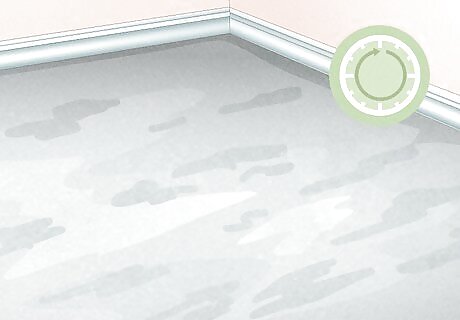
Allow the floor to dry overnight once you have finished your treatment. To prolong this process and give the enzymatic solution more time to work, you can cover the floor with a plastic tarp. This will slow the evaporation rate of the solution. If the smell persists, treat any of the heavily soiled areas with another round of enzymatic cleaner.
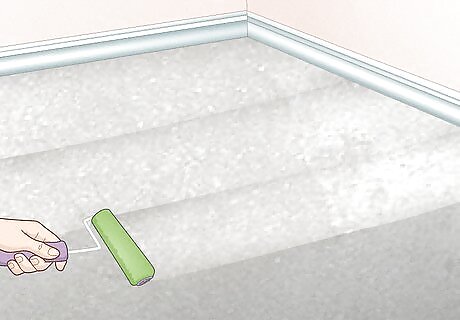
Consider sealing your concrete floor once the smell has truly been eliminated. This will make your floors much easier to clean in the future, will seal any pores and usually looks more attractive.

















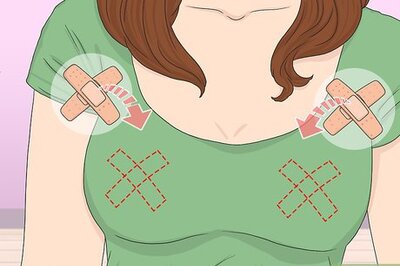

Comments
0 comment